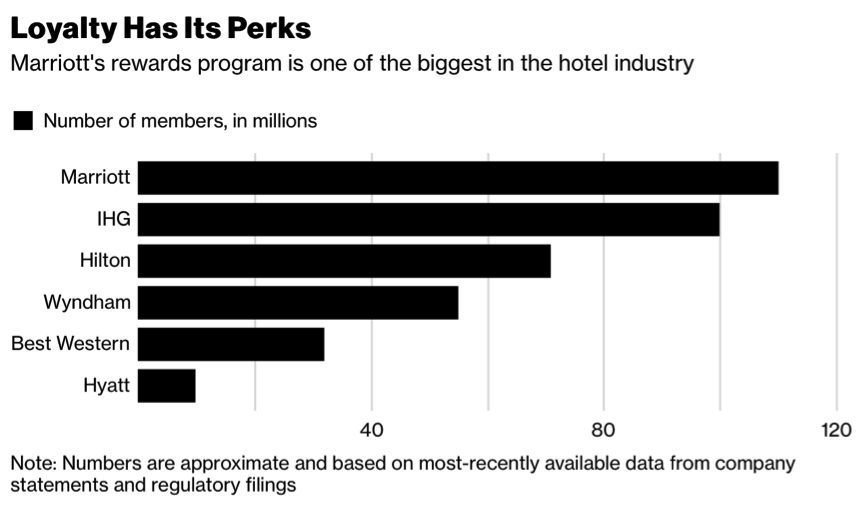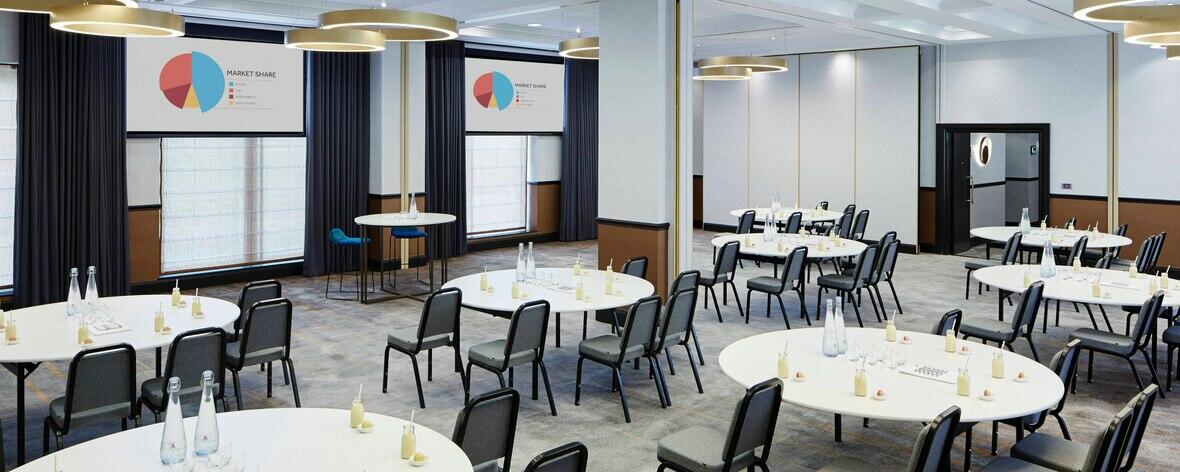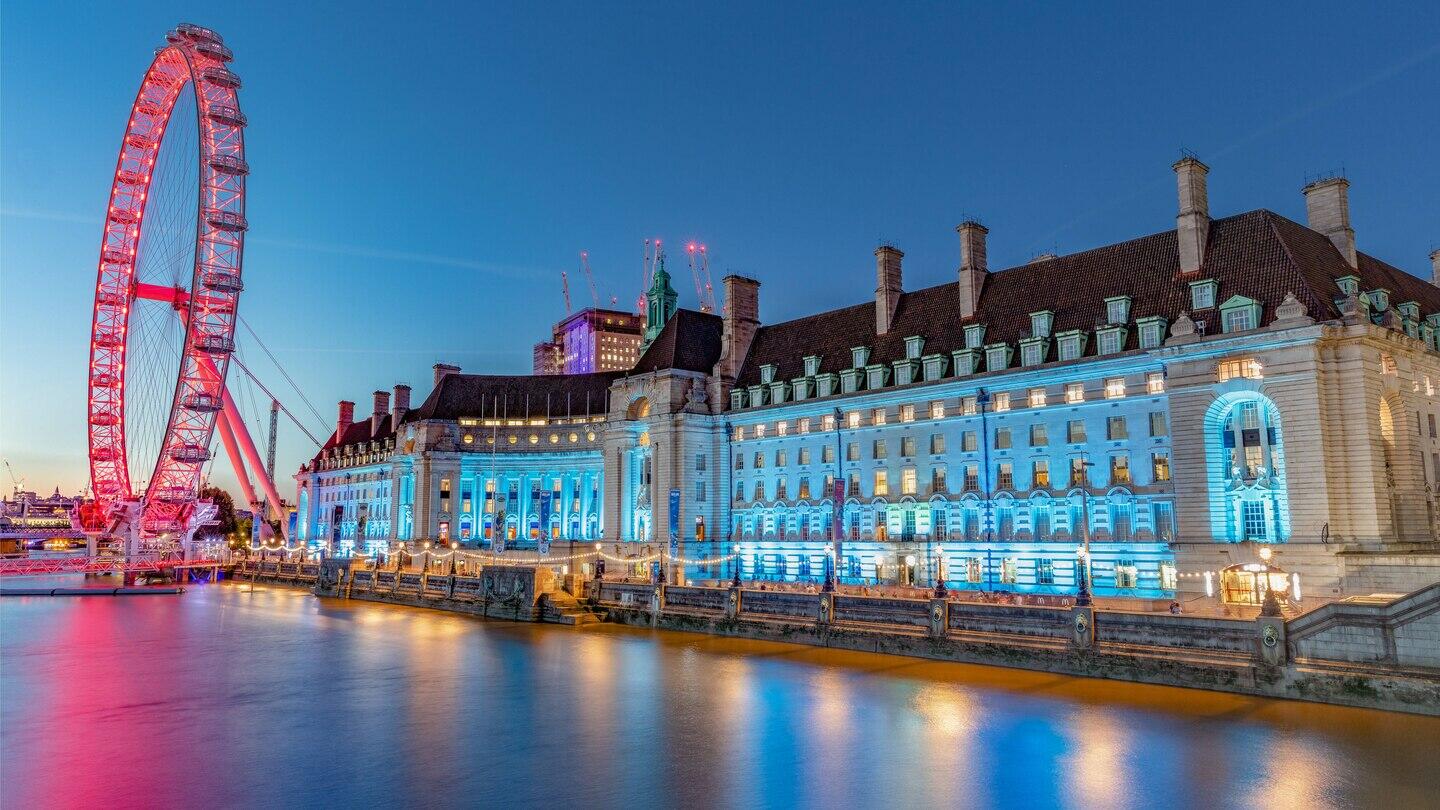Executive Summary
The current report aims at reviewing the market segmentation and positioning strategies utilised by Marriott in London. The hotels of the analysed chain vastly adopt such segmentation variables as demographic, geographic, psychographic, user-status, and purpose of travel to target and position their specifically developed services. However, the literature review and the analysis of the segmentation in accord with service delivery shows that Marriott is at risk of losing its advantageous market position due to diminished implementation of technologies.
It is argued that in the conditions of modern technology-driven society, behavioural segmentation on the basis of online purchasing behaviours might be an effective tool for attracting young travellers. It is recommended to update currently used digital tools, integrate a more diverse segmentation strategy capable of identifying the purchasing needs of technology-interested individuals and provide more innovations for customer satisfaction. It is possible to accomplish through generally available mobile check-in opportunities, virtual reality room tours, and the introduction of more modern technologies for guests’ use during their stay at Marriott.
Marriott Target Market Segmentation: Introduction
The sphere of hospitality industry incorporates multiple organizations that implement diverse marketing techniques to provide competitive services and achieve customer loyalty and satisfaction. The hospitality business is inherently dependant on immediate customer outcomes. Therefore, the model of segmentation, targeting, and positioning (STP) is vastly used by hospitality industry organizations in general and big hotels, in particular.
While the hospitality market is very broad, the process of segmentation helps to identify the groups of target customers in order to analyse and address their needs and preferences for further directing the services at their accomplishing. According to Ezeh (2017, p. 32), market segmentation is a process of “dividing the heterogeneous market into different homogeneous groups of consumers” who share similar needs and expectations from a service provider.
Once the groups are identified, and their needs are clearly stated, a hospitality organization starts targeting its prospective services at the segments. This process involves the development of specific services that are of great importance to a particularly identified segment of customers, such as the importance of in-room safes and fax-machines for business travellers (Ezeh 2017). The final step of this marketing process is positioning, which implies creating a competitive, reliable, and easily recognisable image of an enterprise so that the consumers develop loyalty to the hospitality entity.
The Marriott hotel, which is chosen for this report, vastly utilises the methods of their market segmentation and service positioning. The company demonstrates significant results in its work with consumer satisfaction and has become one of the leading hotel chains in the global hospitality industry (Salvioni 2016). The scope of accommodation types, locations, and available services varies to meet the needs and requirements of a great variety of guests. In this report, the techniques of market segmentation and positioning of the Marriott hotel in London will be reviewed and analysed. It is claimed that the long-established tradition of setting the needs of the customer to the front and segmenting the market according to multiple criteria allows Marriott to attract significant numbers of guests annually.
Literature Review
The issue of market segmentation and positioning in the hospitality industry is vastly covered in the literature that provides an opportunity to obtain a sufficient amount of information necessary for the analysis. Overall, the role of the customer in hospitality in general, and hotel business, in particular, is crucial, which stimulates the emergence of consumer-driven marketing techniques (Chen, Raab & Tanford 2015). Therefore, the SPT model is vitally important for hotels to withstand strong competition. It is important to state that despite accurate knowledge about marketing processes, there is not one single method of segmenting a hotel’s market (Kotler et al. 2017).
Hotel managers consider various criteria to their potential customers into groups, thus creating a great variety of consumer segments. As Khan, Hakeem, and Naumov (2018) state, market segmentation in the hospitality industry allows to mitigate the changes in the marketplace and use the opportunities of the diversified market in the interest of an organization. Thus, the thorough application of STP in hotel business allows for significant competitive advantages and organizational growth.
The criteria for segmenting potential markets include various dimensions.
According to Kotler et al. (2017), the main variables of market segmentation are geographic, psychographic, demographic and behaviouristic ones. Ezeh (2017) identifies and separates some more additional variables, including benefit, purchase occasion, usage incidence, user status, usage rate, and image segmentation. Geographic segmentation divides the customers into groups depending on nations, states, cities, or districts, paying acute attention to cultural particularities, attractions, and local entertainment (Kotler et al. 2017). Psychographic segmentation pursues clients’ character-specific requirements, life-style appeals, and social class requirements.
As for demographic variable, it is used to segment the market according to the customers’ age, gender, income rate, ethnicity, and family life cycle (Ezeh 2017; Kotler et al. 2017). The behaviouristic segmentation method is based on the identification of purchasing behaviour patterns and dividing the customers into groups sharing the same attitudes to service purchasing. These segmentation variables are the basis of hotel marketing, but they are not limited to the ones mentioned above.
Indeed, new types of segmentation emerge due to the growth of competition in the hospitality business that is influenced by globalization trends. One of such segmentation type is the one applied according to customers’ participation, which includes the development of specific services available to loyal guests (Chen, Raab & Tanford 2015). In addition, there exists a type of marketing segmentation that concentrates around the purpose of travel and might be narrowed down to business, family visits, and non-business trips (Ezeh 2017).
The market positioning is based on the segmentation process and is aimed at meeting the identified needs of particular consumer groups. Utilizing location, personnel, service, and image differentiation, a hotel might embrace a very diverse population by meeting their specific requirements and interests (Kotler et al. 2017). Large hotel chains are entitled to define their target market to direct their services specification at their particular customers better.
Marriott International is one of the largest hotel chains in the world today. Having originated as a family business, it now incorporates “2800 hotels in 70 countries” (Madar 2017, p. 142). The organization owns sixteen brands and provides a significant number of services to diverse market segments. However, the primary population targeted by Marriott includes mid-scale, upscale, and luxury markets (United States Securities and Exchange Commission 2017). The company initiates franchising to expand its business properties in diverse countries, which increases their prospects to sustain a leading position in the market (Marriott International, Inc. 2018 annual report 2018). As it is evident from Figure 1, the company has increased its revenues between 2012 and 2016, demonstrating growing rates of profit.

More specifically, the loyalty rates achieved using proper segmentation techniques application are significantly higher than those of leading competitors of Marriott. It is demonstrated in Figure 2, where the graph shows how Marriott’s reward program benefits its customers’ loyalty.

Results and Discussion
The core of the report is aimed at the analysis of Marriott in London. According to the official website of the Marriott Hotel, there are forty-five Marriott hotels in the United Kingdom, nine of which are located in London (Marriott hotels worldwide 2019). The analysis of the hotels of the Marriott chain available to the visitors of London has demonstrated that the organization utilizes different variables to segment its market. The variables vary from geographical and psychographic to user-status and purpose of travel segmentation (Ezeh 2017; Kotler et al. 2017).
Being located in different parts of the city, the hotels are primarity located in central districts, close to the most significant cityscapes and historical sights. Such physical positioning of the facilities is defined by both geographical segmentation that targets at attracting people by landscapes, and demographic, that prioritizes luxury and upscale market, which requires beneficial location and high standards of properties. For example, the services available at London Marriott Hotel Maida Vale, include business meetings facilities, which might be seen in Figure 3, business lunch menus, and other services specific to those who travel for business purposes (London Marriott Hotel Maida Vale 2019).

Another hotel situated in a picturesque location in the city of London is London Marriott Hotel County Hall. As it is seen from Figure 4, the building of the hotel represents unique English architecture, since the hotel occupies the building of the former London City Hall (London Marriott Hotel County Hall 2019).

This hotel positions an array of services required by the market segment identified with the help of geographical and demographic segmentation. Its luxury rooms and location aim at attracting up-scale customers with high-level income who are interested in diving into the classic atmosphere of London. Indeed, the views on London Eye, Big Ben, Westminster Bridge, and the River Thames (London Marriott Hotel County Hall 2019). Thus, multi-variable segmentation proves to attract more customers sharing similar requirements from the hospitality industry.
As for Grand Residences by Marriott – Mayfair-London, this hotel embodies the scope of services specifically designed for leisure, tourism, and family time-spending. The Edwardian-style house, where the hotel rooms are situated, provides luxurious suits perfect for relaxing. The photo of the building might be seen in Figure 5.

It is evident that the market for this hotel is segmented according to the psychographic criterion and aims at satisfying the needs of those cherishing comfort and calmness in their hotel stays (Ezeh 2017). Therefore, upscale guests might be the target population for Grand Residences by Marriott – Mayfair-London.
A more modern exterior and interior design of London Marriott Hotel Kensington, as seen in Figure 6, is targeted at guests of a more contemporary taste.

Entertainment options, flat-screen television, wi-fi, comfortable bedding, and location close to significant London landmarks demonstrate that the organization has applied multi-leveled segmentation to attract contemporary audiences according to their geographical, demographic, and psychographic features. Overall, all of the analysed hotels available to London guests share the same basic online booking opportunities, not providing exclusive digital and innovative tools of checking-in or room preview. It is assumed that such a standardized approach to technology utilization by the organization is insufficient in the contemporary technology-driven hospitality industry.
In the course of the review of the literature and the analysis of market segmentation and positioning of services by Marriott hotel in London, some difficulties have been identified. One of them is the diminished role of behavioural segmentation on the basis of service purchasing behaviour. This issue mirrors the state of affairs on a global scale, where “the refinement of segments has been limited by a comparatively slow adoption and implementation of new technologies” (Pridmore & Hamalainen 2017, p. 110).
Despite the significant efforts made by the organization to apply information technologies and digitalization to service positioning, there is some threat to sustainability due to the growing rates of digital purchasing behaviours. As the management of Marriott International identifies in its annual report, the hospitality industry requires continuous development in the sphere of technologies, including those used for “reservation, revenue management, property management, human resources and payroll systems, … Loyalty Program, and technologies” available to guests (Marriott International, Inc. 2018 annual report 2018, p. 16). Failure to ensure continuous technology implementation in service delivery by Marriott increases the risk of losing a competitive position.
Therefore, it is recommended to update the available digital resources, initiate extensive work on website refinement, and integrate more opportunities for the customers to browse, get enough information about the hotel, book, and check-in, using digital devices. Overall, the majority of people in the modern technology-driven world benefit from the opportunities provided by the Internet. Their ratings and feedback expressed through social media might drastically impact the brand recognition and overall success of an organization (Neirotti, Raguseo & Paolucci 2016).
Since market segmentation allows for identifying the most profitable target population, it is vital to prioritize technology users as one of the leading market segments (Camilleri 2018). According to Lam and Law (2019), contemporary hotel guests are exposed to multiple channels of information distribution. They are interested in technology at two levels, including the choice and reservation of accommodation, and the comfort of stay enhanced by the availability of technologies and innovations.
Thus, Marriott needs to enhance its current level of digitalization and technology implementation not only through web-site improvements but also via purchasing behaviour segmentation. It is possible to reach targeted customers through apps and social media, where they tend to be easily contacted (Camilleri 2018). One of the ways to eliminate the risk of competitive disadvantage on the basis of technology application is the introduction of virtual reality tours as an effective tool for attracting new customers (Young 2016).
The chain of Marriott hotels already has a well-developed system of online services and segments market according to user-status. It is illustrated by the promotion of the so-called M-Club that prioritizes the needs of loyal customers (MClub 2019). It is important to use the experience in the implementation of such ideas in the future for segmenting technology-interested customers.
Marriott Market Segmentation, Targeting, and Positioning: Conclusion
In summation, Marriott hotels in London are very successful hospitality entities, which illustrate the global dominance of Marriott International. The long-established and well-defined segmentation strategies used by Marriott vary from demographic and psychographic, to geographical, user-status, and purpose of travel. Separate hotels aim at a particular market segment, developing a refined array of services that might meet the needs and requirements of a specific group of guests.
However, the analysis has shown the lack of attention of the organization to the promotion of technology application throughout its operations, It is anticipated that digitalisation of information channels, booking and purchasing opportunities, as well as an increased number of technologies available to the guests might ensure Marriott’s sustainable growth and competitive position in the market.
Reference List
Camilleri, MA 2018, ‘Market segmentation, targeting and positioning’, in Travel marketing, tourism economics and the airline product, Springer, Cham, Switzerland, pp. 69-83.
Chen, SC, Raab, C & Tanford, S 2015, ‘Segmenting customers by participation: An innovative path to service excellence’, International Journal of Contemporary Hospitality Management, vol. 29, no. 5, pp. 1468-1485.
Ezeh, PC 2017, ‘A critical review of market segmentation, target marketing and positioning in hospitality marketing’, in D Gursoy (ed), The Routledge handbook of hospitality marketing, Routledge, London, England, pp. 31-40.
Grand Residences by Marriott – Mayfair-London 2019. Web.
Khan, YH, Hakeem, A & Naumov, N 2018, ‘The use of branding and market segmentation in hotel marketing: A conceptual review’, Journal of Tourism Intelligence and Smartness, vol. 1, no. 2, pp. 12-23.
Kotler, PT, Bowen, JT, Makens, JC & Baloglu, S 2017, Marketing for hospitality and tourism, 7th edn, Pearson, Harlow, England.
Lam, C & Law, R 2019, ‘Readiness of upscale and luxury-branded hotels for digital transformation’, International Journal of Hospitality Management, vol. 79, pp. 60-69.
London Marriott Hotel County Hall 2019. Web.
London Marriott Hotel Kensington 2019. Web.
London Marriott Hotel Maida Vale 2019. Web.
Loyalty has its perks 2018. Web.
Madar, A 2017, ‘Quality – a competitive advantage on the hotel services market. Case study: Marriott Hotels & Resort versus Radisson Blu’, Bulletin of the Transilvania University of Brasov, vol. 10, no. 2, pp. 141-146.
Marriott hotels worldwide 2019. Web.
Marriott International, Inc. 2018 annual report 2018.
MClub 2019. Web.
Neirotti, P, Raguseo, E & Paolucci, E 2016, ‘Are customers’ reviews creating value in the hospitality industry? Exploring the moderating effects of market positioning’,
International Journal of Information Management, vol. 36, no. 6, pp. 1133-1143.
Pridmore, J & Hamalainen, LE 2017, ‘Market segmentation in (in)action: Marketing and ‘yet to be installed’ role of big and social media data’, Historical Social Research, vol. 42, no. 1, pp. 103-122.
Salvioni, ST 2016, ‘Hotel chains and the sharing economy in global tourism’, Symphonya. Emerging Issues in Management, no. 1, pp. 31-44.
United States Securities and Exchange Commission 2017, ‘Form 10-K’.
Young, JK 2016, ‘Non-travel: The role of design in the experience of contemporary travel’, Travel and Tourism Research Association: Advancing Tourism Research Globally, vol. 11. Web.